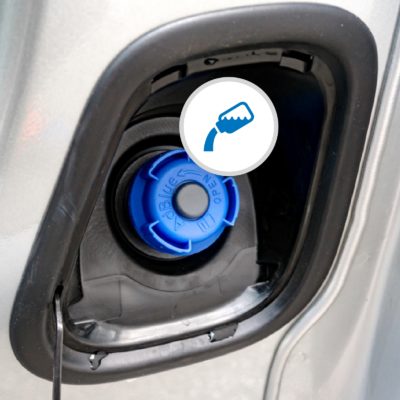Spotting NOx Sensor failure symptoms and preventing failure with Forte’s exhaust crystal preventer
In this blog we’re going to be taking a look at the main NOx Sensor failure symptoms and how you can prevent NOx Sensor failure with Forté Exhaust Crystal Preventer.
What is the NOx Sensor?
Put simply, the NOx Sensor is responsible for measuring the vehicles’ NOx (Nitrogen Oxide) levels produced following the combustion cycle. NOx emissions are found in an engine due to higher in-cylinder temperatures. The diesel fuel or the ester-based biodiesel does not contain nitrogen and the NOx is formed by taking the nitrogen from the air.
What are the main NOx Sensor failure symptoms and causes?
Picking up on the NOx Sensor failure symptoms and causes is important so that you can fix the issue as soon as possible. There are quite a few reasons why a NOx sensor can fail. The first one is water in the exhaust system, a by-product of combustion and catalytic conversion, can damage the NOx sensor.
NOx Sensor failure also relates to excess fuel entering the exhaust system, injector fouling, injector leaking or engine misfire are all things that can lead to sensor failure. It’s extremely important to rectify the fault quickly in order to prevent long-term sensor damage.
A major cause of NOx Sensor failure is soot from the combustion process. This can coat the sensor and affect the reading as the sensor can no longer measure the gas effectively. The soot is also abrasive; when larger particles of soot are present in the exhaust gas, the passing stream can damage the sensor.
Often impact damage is a major cause of sensor failure. The sensor is thin and fragile, which means any objects hitting the sensor from the road surface can result in failure – this also includes thermal shock. Driving through a puddle of water and rapidly reducing the sensor temperature can cause the measuring plate to fracture.
Lastly, increased oil consumption can bring about NOx Sensor failure. Oil entering the exhaust system, then settling on the components and sensors can result in damage being caused.
Our tips on how to avoid sensor failure
Some sensor failures cannot be avoided. A sensor replacement will normally be required when physical damage to the sensor has occurred through water, soot, oil or impact. However, when there are NOx Sensor failure symptoms and causes that suggest no physical damage has been done to the sensor, you can prolong the life of your sensor by regularly running the vehicle at operating temperature. This will reduce moisture and water content in the exhaust. Short stop/start drives allows moisture and water to collect as the vehicle is rarely at operating temperature.
Forté products that will prevent NOx Sensor failure
At Forté we have a range of leading and advanced products that can help to prevent NOx Sensor failure.
We recommend that for every service to use:
- Advanced Formula Motor Flush to clean the crankcase
- Advanced Formula Diesel Treatment to clean the fuel system
- Add Exhaust Crystal Preventer to the AdBlue tank to prevent crystallisation
We recommend that for SCR system faults to use:
- New Generation Engine Flush to clean the crankcase
- DPF Cleaner & Regenerator to aid DPF regeneration
- Diesel Specialist Injector Cleaner to restore exhaust gas temperatures
- Add Exhaust Crystal Preventer to the AdBlue tank to prevent crystallisation
Adding Exhaust Crystal Preventer to the AdBlue tank is particularly important when it comes to SCR system faults and preventing future sensor failures. This product has been designed to offer the most cost effective and safe way to prevent crystals from forming in the Diesel Exhaust Fluid. It works by dissolving crystals that have formed in the SCR system from the tank to the end of the exhaust. This will then, in turn, protect NOx sensors and prolong the life of them too.
Hopefully, you’re now feeling better equipped to spot NOx Sensor failure symptoms and the causes, to prevent further damage in the long run. We have a wide range of products that will help to prevent sensor failure. In particular, our Exhaust Crystal Preventer is specially formulated to prevent sensor blockages and failures. Find out more.

